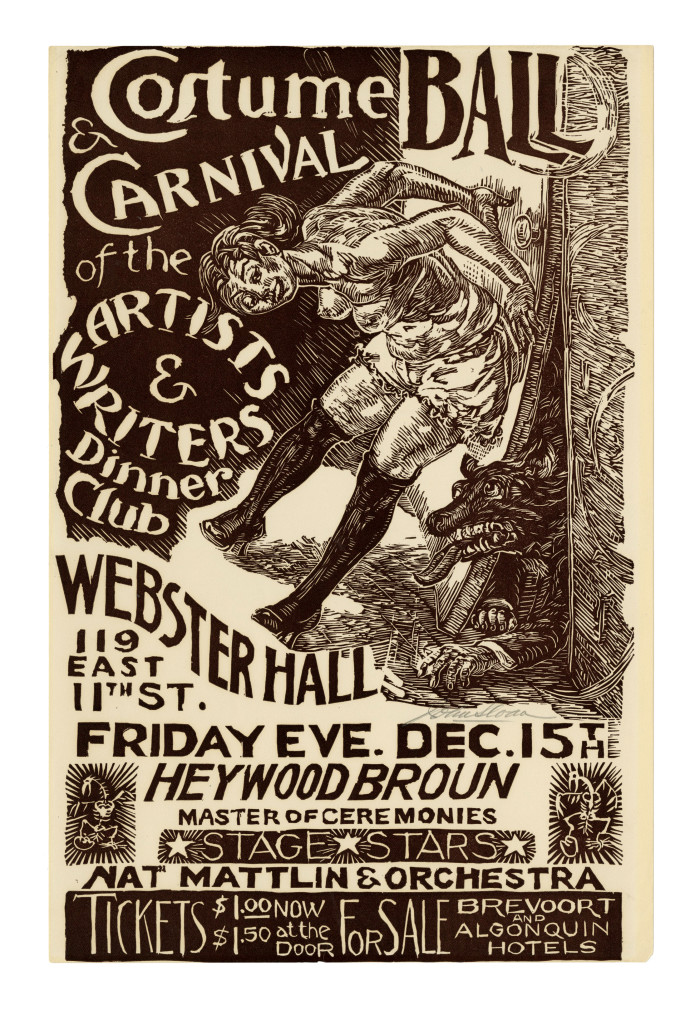Costume Ball & Carnival of the Artists & Writers Dinner Club
John Sloan (1871-1951)
Costume Ball & Carnival of the Artists & Writers Dinner Club – 1933, Linocut.
Morse 277. No edition, printing unknown but assumed very small. Signed in pencil lower right, beneath the wolf’s hand-like paw.
Image size 19 x 12 inches (483 x 305 mm); sheet size 19 x 12 1/2 inches (483 x 318 mm).
A fine impression, in dark brown ink, on the full sheet of heavy, cream wove paper. A reinforced crease in the top left corner; a minor nick in the bottom center sheet edge and a small loss in the bottom right sheet corner; slight yellowing to the sheet edges left and right, not affecting the image. otherwise in very good condition. The image printed to the sheet edges top and bottom, with small margins left and right; the sheet size (19 x 12 1/2 inches) is consistent with impressions in the collections of Library of Congress and Metropolitan Museum of Art. Very scarce; we find no record of this print appearing on the art market.
The poster copy reads: “Costume Ball & Carnival of the Artists and Writers Dinner Club . Webster Hall . 119 E 11th St. Friday Eve. Dec. 15. Heywood Broun . Master of Ceremonies . Stage Stars . Nat Mattlin & Orchestra . Tickets $1.00 now $1.50 at the door . For Sale . Breevort and Algonquin Hotels.”
Sloan’s poster advertises a decadent costume ball sponsored by the Artists & Writers Dinner Club, a group that provided regular dinners to needy people in the arts during the Depression. Since its founding in 1886, Webster Hall on the Lower East Side had become an established venue for social events, meetings, lectures, and dances, but soon became best known as a meeting place for left-wing political activist groups of all kinds. By the 1930s, it was nominated “the Devils’ Playhouse,” notorious for decadent parties and carnivals arranged by progressive groups like the editors of The Masses and the Liberal Club. Parties were inspired by the costume balls of Paris and given names like “Pagan Romps” and “Art Model Frolicks;” by then it had also become one of the places that homosexuals could openly hold their own celebrations and events. The burlesque figure dominating the image, with bared breasts, bloomers, and stockings merely hints at the decadence and debauchery that awaits the ball’s attendees.
Webster Hall has in fact continued its storied history to the present day as a venue for numerous recordings, concerts, and events. In 2008 the building was officially designated a New York City landmark, recognized for its significant role in the cultural development of New York City’s Greenwich Village.
